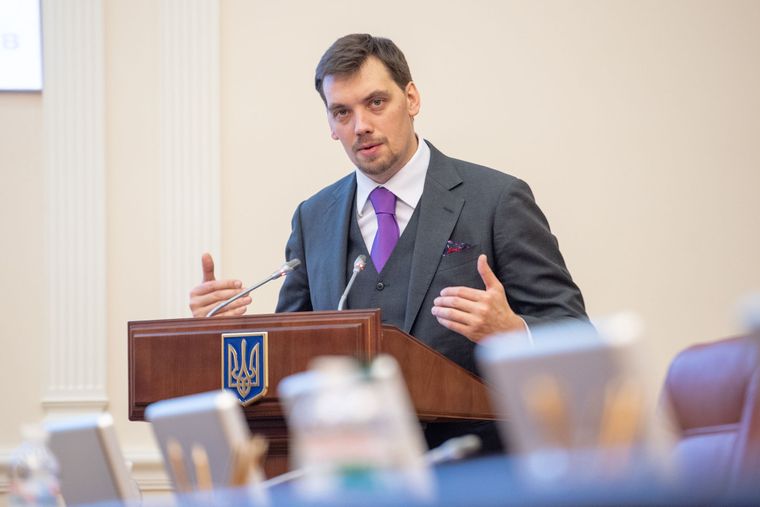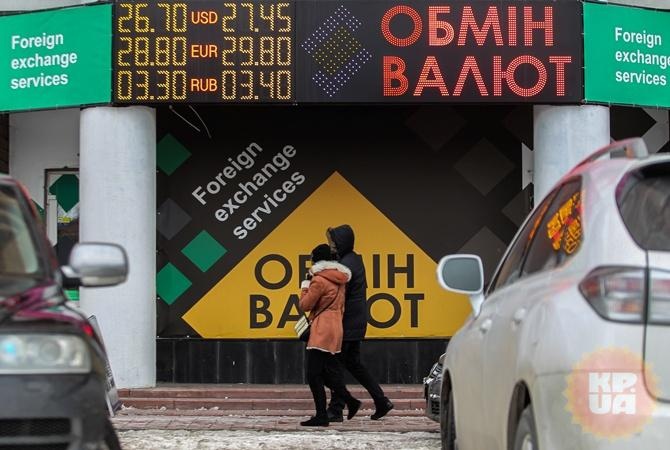On 14 November, the Ukrainian Parliament adopted the 2020 state budget. Politicians may declare many different plans and policies, but in reality, the budget defines the true direction of the country. What are the priorities of the new Ukrainian government and what does Zelenskyy’s “end of the age of poverty” mean in fact?
The 2020 budget differs from that of 2019 being slightly more neoliberal. Considerably more expenditures are allocated for the healthcare system and for the military. An increase in funding is allocated for a key education project -- the “New Ukrainian School,” which is intended to reform the elementary education system. Greater funding will be provided to the state agency for road construction. More support for film production and for the public broadcasting company will be available. Also, gas subsidies and operational expenses for government institutions will be reduced.
Summarizing, the budget can indeed be dubbed the “budget of development and security of people,'' as Honcharuk called it during his budget presentation. Nonetheless, numbers in the budget define only the intentions of the government, but not yet guarantee proper implementation of policies and reforms, in particular, those required by the IMF.
General remarks: planned GDP growth, state debt, and the country’s strategy
It is worthwhile highlighting some of Prime Minister Oleksiy Honcharuk’s conclusions, comparing the 2020 budget to the 2019. Although Honcharuk came to office with high goals (he announced 40% of GDP growth within the next five years — or at least 5% growth annually), the 2020 budget projections are much more modest, at 3.3% annual GDP growth.

Priorities of the 2020 budget
The differences and similarities between the 2020 and 2019 budgets reflect the differences and similarities between the previous and current governments. With a 7% inflation rate projected for 2020, any increase that exceeds this rate will mean a real increase.

“The negative [demographic] dynamic seems to be a huge problem for us to tackle. And the quality of healthcare that is being provided to our citizens today is one of the priority segments we are focusing on.”Yet, more important than the amount of expenditures is how they are targeted. By choosing to complete healthcare reform, as begun by former Minister Uliana Suprun, the new Cabinet demonstrates its commitment to improving it. For the first time in the country’s history, more revenue will be allocated to the National Health Service of Ukraine than generally to the Ministry of Healthcare. That means the second stage in reforming hospitals will indeed be launched in 2020, as had been planned. The principle of "money follows the patient" means that hospitals will receive funding from Health Service based on the level of services they provide, rather than “one-size-fits-all” state subsidies from the Ministry. Additionally, as Honcharuk emphasized, the government will finally acknowledge critical emergency services. At least 470 new ambulances and 25 new points of emergency care are planned for 2020. Although the prime minister stated that the Affordable Medicine program -- intended to fund prescription medicines for the poor -- will be further expanded, a specific sum was not provided. 4. The increase in revenue for road construction increases from 40 to 62.2 billion UAH (+56%). This allocation includes national roads, as well as subsidies for local roads. This considerable increase in funds indicates a desire to continue the successful rebuilding of the most-needed roads started by the last government. However, unlike previous budgets where each road targeted for construction was specifically named, this budget allocates a general fund for roads. The selection process is not yet defined, thus the effectiveness of this approach is unclear. 5. Contrary to doubts promulgated by the political opposition, the 2020 budget will continue decentralization reform. Although there is no increase in expenditures, the State Fund for Regional Development will retain its funding at a level close to 2019. With 7.2 billion UAH for local projects to be funded, compared to 7.5 billion in 2019, the difference is minor. Support for newly-created united municipalities will be maintained at the same level (2.1 billion UAH). The only initiative that has been suspended is state support for healthcare in rural communities. The prime minister emphasized that decentralization reform “should finally come to its logical end.” As a result, any remaining municipalities will need to complete unification as soon as possible, which is mandatory prior to local elections in the fall of 2020. Once again, Honcharuk is clearly aiming to complete the progressive reforms as laid down by Groysman’s Cabinet. 6. The decrease from 58.1 to 47.6 billion UAH (-18%) on all state subsidies for heating is also vital for the development of the economy. It is especially important in the context of Zelenskyy’s populist promises about the end of “the epoch of poverty”. The highly controversial issue of gas is typically debated between those who advocate for support of the poor and those who advocate for an expanded military -- the only way to achieve the latter is by reducing funding for social programs. Yet whatever stance one favors, the fact remains that in the past a percentage of subsidies were granted to those who did not really need them. Honcharuk has announced more rigorous checking on eligibility for subsidies so that only those who need them most receive them. The saved revenue will be allocated toward measures that contribute to the military and economic development of the country. Some other allocations are worth underscoring as key priorities for the 2020 budget-- particularly within the national context
- 4 billion UAH allocated to financial support for farmers, especially given the planned opening of the land market. At the same time, however, several other agricultural programs will end.
- An increase from 1.2 to 1.4 billion UAH to support the “New Ukrainian School” project, intended to create a more flexible and interactive teaching model for primary education.
- A major increase from 10 to 485 million UAH toward state support of housing for internally displaced persons who have lost their homes due to war in the Donbas.
- An increase from 508 to 758 million UAH for state support of the film industry.
- An increase from 1 to 2 billion UAH for state support of the public broadcasting company.
- 500 million UAH allocated for the “Unifying the Country” education project. More than 100,000 pupils will be able to travel to other regions to increase their awareness of the goals of their fellow pupils, as well as their way-of-life.
- 240 million UAH allocated for the development of the tourism industry in Ukraine -- Honcharuk has called this sector one of the country’s largest, yet unrealized, opportunities for economic expansion.
Although Honcharuk's budget contains some disputable issues -- a reduction in subsidies for rural healthcare; a reduction in support for the preservation of local ecological reserves; and others, Zelenskyy’s populist proclamations which decried the achievements of his predecessors have mostly been quieted. Budget 2020 pays tribute to the progress of reform by continuing the best initiatives of the previous government while eliminating the regressive policies of the socialist past.
At the same time, one should be somewhat cautious about full optimism promised by the budget, until judicial reform, political competition between oligarch Kolomoyskyi and the state for the Privatbank as well as cooperation with the IMF are completed in favor of Ukraine. Only this can guarantee that budget costs are spent on state policies and the business is properly protected in the county.
Read more:
- Rising credit ratings and economic growth: is Ukraine turning into an Eastern European Economic Tiger?
- Ukraine launches large-scale reform for its post-Soviet prosecutor’s offices system
- Inside Zelenskyy’s land sales bill and Ukraine’s land reform controversy
- 84% of Ukrainians believe in populist economic fairy tales
- Ex-National Bank director’s house burns as deal suspected between Zelenskyy & top Ukrainian oligarch
- If Zelenskyy wants to save his ratings, Bohdan must go





